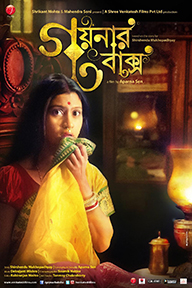The New York Indian Film Festival is an annual celebration of Indie films, categorized as features, documentaries and short films, made from, of, and about the India subcontinent. During the five days of back-t0-back screenings, organized by the Indo-American Arts Council, directors, many producers, directors and actors spoke in detail to the audience about their films. The festival also included industry panels, an award ceremony, special events, nightly networking parties and red carpet galas. The goal of the week-long series of events, from May 5 to May 10 in Manhattan, was to bring awareness of Indian cinema, entertain and educate the world outside of India.
Many little known films made a big impression during the 14th edition of the festival, which also screened films by big name-directors, like Anurag Kashyap’s “Ugly,” Aparna Sen’s “Goynar Baksho” and Gurinder Chadha’s “Bhaji on the Beach.” An annual celebration of Indie films, the festival is categorized into features, documentaries and short films, made from, of, and about the Indian subcontinent.
The film “Liar’s Dice” took home the title of best film and best actress, filmed by debutante director and Malayalee actress Geethu Mohandas.
For a full list of award winners, reviews and photographs, visit the NYIFF website.
“Goynar Baksho”
Directed by Aparna Sen
India 2013, 141 Minutes, Bengali with English subtitles
Cast- Konkona Sen Sharma, Moushumi Chatterjee, Saswata Chatterjee, Paran Banerjee

About the Director: Aparna Sen is a renowned name in Bengali as well as Indian cinema. She has excelled both as an actor in film and theater, and as a director of parallel cinema. Aparna was born in 1945 in Kolkata.
When I first read about the film”Goynar Baksho,” the description on NYIFF’s website read: “a story of three generations of women and their changing positions in society, seen in relation to a box of jewels, handed down from one generation to the next.” This synopsis led me to believe that the film would revolve around the touchy topic of family gold in a post-colonial Bangladesh, where gold was mostly misplaced by British colonial rule. But it wasn’t. Although the themes of South Asian riches—particularly silk and gold—are prevalent themes within the movie, the film revolved around another idea; one we can relate to at BG.
“Goynar Baksho” starts off with a shy new bride, named Somlata, who is terrified of her in-laws and husband. This shyness is reflected in the severity of her stutter. At first, we see she is made to seem subservient to the male patriarchy of the family. Somlata is only to tend to her husband and the other male members of the clan.
The film begins with Somlata’s husband’s aunt, Pishima, death. But Pishima’s spirit haunts the house in order to protect her own treasure—a box of gold jewelry. Pishima is the first form of feminism that we see in the movie. She embodies a strong woman in the first half of the 20th century in Bangladesh.

She is a woman with strong ideas and a stubborn spirit. From Pishima’s ghost, we see resentment and regret that she did not have the rights of independence and freedom. In her life, she was conformed to the traditional Bengali role of daughter, wife, mother and sister. However, as a spirit, she is a heavy smoker and advocates against monogamy.
At first our main character, Somlata, fears Pishima’s spirit—but the spirit pulls a strong feminist character out of Somlata—who grows to become the breadwinner of the family. We see inklings of a feminist, who is a strong, but silent woman. Somlata single-handedly keeps the family alive, but never says a word about it nor asks for anything in return.
The movie’s second half introduces us to the third generation of the family, who Somlata’s daughter, Chaitali. Chaitali is a loud-mouthed feminist, who is not afraid to speak her mind—a typical woman in today’s society.
In her role as the girlfriend of a young man fighting for Bangladesh’s separation from India during the partition, she helps his fight, but takes a backseat to the gentleman’s character in the film. This represents the void women still need to fill in today’s age.
The film is powerful in recounting a story that has feminist roots, but like many South Asian films, the lengthiness and multiple plot-lines and themes (i.e. gold, silk, family drama, political unrest) detract us from the main concept, which is the progression of the feminist movement throughout Bangladeshi history.




